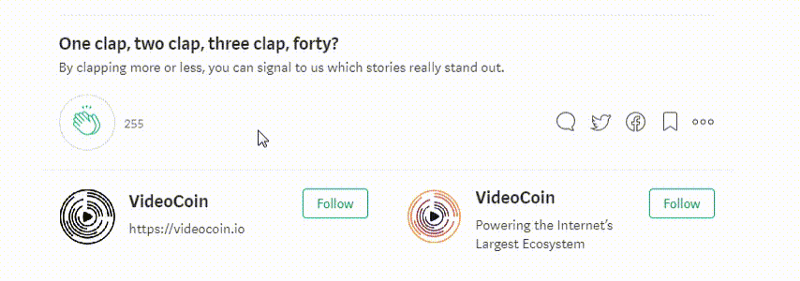
Streaming media is booming and everyone is getting onboard. A 2015 report by Cisco predicted that in 2016, 6.1 exabytes of data were to be consumed on mobile platforms. It was expected to rise to 9.6 exabytes in 2017 and jump to 15.2 exabytes in 2018. Without knowing the exact numbers, it is safe to say the demand and growth will continue.
If you?re involved with streaming media, you either know all about video transcoding, or you?re wondering why you keep hearing about it. If you aren?t sure you need it, that places you in the second camp. An understanding of video transcoding and how to do it is critical for any success with streaming video; especially if you need to deliver streaming video to a variety of different devices.
What is Video Transcoding?
Video transcoding, sometimes called video encoding, is the conversion from one digital encoding format to another, such as for movie data files. This involves translating all three elements of a digital video at the same time ? the file format, the video, and the audio.
This is a vital function when a target device does not support the current format of your media, or has limited storage capacity that requires a reduced file size (think going from WMV to MP4). It is also used to convert incompatible or obsolete data to a better-supported, read newer, video format.
Why is Transcoding Critical?
Video transcoding is critical when you want your content to reach more end users.
For example, you?re preparing to do a live stream from your office. It?s a possibility that you?re capturing webcam audio and video with a browser-based desktop application like Adobe Flash, which generates 1080p H.264 video and Speex audio.
Your show will be delivered live to online viewers; however, an attempt to stream it directly will have problems:
- Those viewing without sufficient bandwidth won?t be able to view the stream ? they?ll be watching the ?buffering? circle.
- In order to render the Speex audio, most people will need to watch using Flash Player on a computer. Now you?ve just excluded almost anyone with slower data speeds, tablets, and mobile phones.
With video transcoding, you can create a set of time-aligned video streams, each with a different bitrate and frame size, while converting the Speex audio to AAC audio. This group of streams is internet-friendly, allowing you reach virtually any screen on the planet.
How is Video Transcoding Done?
Video begins life in a format unique to the camera or program used to capture your images and sounds. This is typically not the format needed to deliver the video online or play it from another device. Video transcoding is used to change the original format into one allowing the video and audio to play properly on a user?s devices ? be they computer, tablet, smartphone, or tv.
Video encoding, or video transcoding, involves a two-step process. First, the original file is decoded to an uncompressed format. Second, this uncompressed format is then encoded into the target format.
What are Formats and File Types in Video Transcoding?
When talking about video transcoding, we refer to file formats, file types, and something called codecs.
- Video format specifies how video and audio have been combined and tells playback devices how to play the files.
- Video and audio codec formats refer to the technologies used to both create and play back the digital video and audio.
Examples of file types are MPEG-4 (MP4), Quicktime (MOV), and Flash Video (FLV). The key variable in most cases is the streaming platform you use. Always check what formats and codecs are supported by the platform you wish to use, and whether your video file must be converted to a supported format.
DaCast, for example, requires an MPEG-4 (MP4) file format with an H.264 video codec. Windows Media Video (WMV) files are Advanced Systems Format (.asf) files that include audio, video, or both compressed with Windows Media Audio (WMA) and Windows Media Video (WMV) codecs.
MP4 video provides better quality and compression over WMV, allowing you to store better quality video for the same file size. A good video transcoding program will be able to convert multiple file formats and codecs.
What is the Future of Video Transcoding?
The demand for streaming video has exponentially increased the demand for video transcoding, and clearly, streaming video is here to stay. Why?
Convenience
No one likes being tied to a schedule, and streaming video allows you to watch your programs when and where you have the time to watch them. You can watch them on a bus, you can watch them on a train. You can watch them?well, you get the picture.
Demographics
Millennials and Generation Xers are leading the trend toward streaming video. 63% of Millennials watch live video, and streaming services put that capability in the palm of their hands.
Personalization
Video streaming apps and services make recommendations based on user viewing profiles. In other words, they customize your buffet of recommended content based on your personal interests.
Scalability
Many streaming video services allow you to pick and choose the features and functions you want, and only pay for those selections. If you don?t use it, you don?t pay for it.
While these are all fantastic reasons to enjoy streaming video, the necessary video transcoding still presents some problems.
- Increasing Need for Storage ? Video transcoding is a somewhat cumbersome process that also leads to an issue of storage capacity, especially with the increasing use of video. 82% of internet storage is video.
- Increasing Online Traffic ? According to Cisco?s Virtual Networking Index report, online video could make up 82% of all online traffic by 2020, up from 59 percent in 2014. Video is already far and away the largest source of network bandwidth consumption.
- Increasing Need for Video Compression ? As billions of users make and use massive volumes of video, video compression has become a critical technology to help manage skyrocketing bandwidth requirements.
Solutions are being developed to help with storage and performance. VideoCoin is one such example. VideoCoin is a decentralized video encoding, storage, and content distribution system that will allow for unused storage across the internet to be allocated.
The platform turns all cloud-based video services into an efficient algorithmic market running on a new blockchain with a native protocol token, the VideoCoin (VID). Why not learn more about how VideoCoin is decentralizing this landscape?

Join us for discussion in our Telegram group: https://t.me/videocoin


